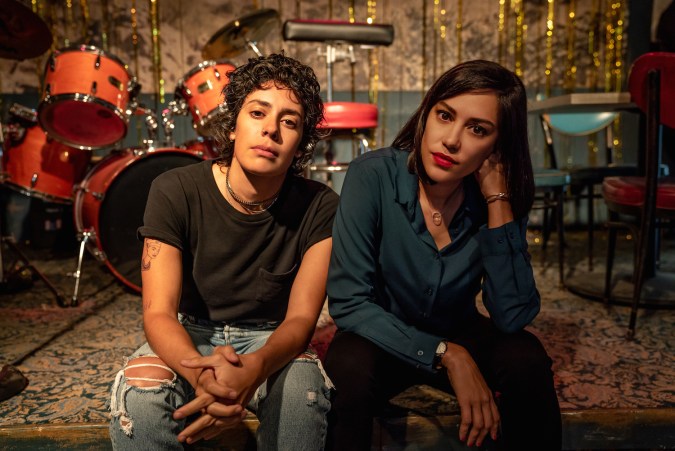I first saw Roberta Colindrez in Amazon’s I Love Dick. I was a junior in college, in my first year of being out. I was still trying to find how I wanted to present my “new” self. In the show she played Devon, a butch queer from a Tejano background. The show was set in Marfa, Texas, about 400 miles west from where I grew up in San Antonio, which is another 30 miles west from where Colindrez grew up in Austin. It was a revelation to watch her swagger around in cowboy boots, dripping with a Tejano-flavored androgynous, queer masculinity I had never seen on TV before (or any other screen for that matter).
Colindrez, who has since gone on to star in Starz’s drama Vida, and landed a role in the upcoming TV adaptation of A League Of Their Own, was recently featured alongside other contemporary butch queers for a New York Times Magazine piece about butch identity. She was one of the few people of color featured, and the only Latina. Speaking about the first butch she remembers seeing in a grocery store, Colindrez shared that “it was the first time I saw the possibility of who I was.” That was what her I Love Dick character Devon was for me and what she’ll continue to be for many butches and masculine-centered Latinx queers of my generation.
Butch identity didn’t feel accessible to me before seeing her in mainstream TV. Butchness — and to some extent even queerness — felt like a very white thing, because, as proved by the majority of butch icons photographed for The New York Times Magazine piece, the most well known butches in mainstream media are often white. Even when I was out in college, the most vocal queer people on campus were also white. I like to think this is changing now that we have more and more widespread representation of brown and black queers in media like Colindrez, Master of None‘s Lena Waithe and Twenties’ Jonica T. Gibbs.
Growing up, Ellen DeGeneres was out by the time I knew what gay meant. But associating queerness with whiteness from a young age also made it easy for me to isolate my queerness from my cultural identity. When talking recently about the depth of the Latinx queer experience shown in Vida, Colindrez told Remezcla that, “Sometimes we want to compartmentalize all our identities. We want to place Latinhood over here and queerdom over here. We want to separate it.” But Vida, with its wide array of queer Latinas, allows for them all to exist messily together.

Seeing yourself represented on screen on one hand makes you think ‘Oh, I am normal, I’m not the only one.’ But it also reminds you of something more important: ‘I’ve always been here.’ Butch Latinxs obviously existed before Colindrez. A year after first seeing I Love Dick, when I began to settle into my own queer masculinity (I literally bought a red jumpsuit to match a scene I’d seen on the show), I bought an issue of The Life And Times of Butch Dykes at Dog Eared Books in San Francisco. The very first issue of the zine created by artist Eloisa Aquino is all about Costa Rica-born Mexican ranchera singer Chavela Vargas. A queer butch icon of the 20th century, Vargas was known for her rough vocals and haunting renditions of rancheras like “La Llorona” and “Paloma Negra.”

The generations and different perspectives of Latinx butchness displayed on Vida is especially heartwarming. There’s the character Eddie, played by nonbinary actor Ser Anzoategui, who is more old school with her short-buzzed hair and penchant for jeans and shapeless tees. “So much so that she doesn’t like the word ‘queer,’” Colindrez told Remezcla. But the show also features Colindrez’s character Nico, a butch of the younger queer community. Nico is slightly more androgynous in look with her curly short mullet and rolled-up patterned button-downs. In one episode she defends Emma when she’s called out for not presenting very “queer.”
I’m so excited for young Latinx queers growing up right now with Colindrez as a voice on screen. I think I would’ve come into my identity much sooner had I seen her on my television growing up. I hope butch Latinxs see her and know that all kinds of butch Latinxs deserve to be represented. The nonbinary butches. The studs. The long haired butches. As The New York Times Magazine article even specifies, “some butches are bottoms, some butches are bi, some butches are boys.” I hope I get to see them all on my screen someday soon. Colindrez may be paving the way but this is just the start of many millennial and gen. Z butch, queer Latinxs to come.




